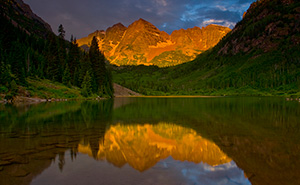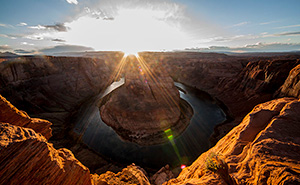Dan Caldemeyer
Wildlife, Nature and Aerial Photography
Wildlife & Nature Photography By Dan Caldemeyer
Read more about - Wildlife & Nature Photography By Dan Caldemeyer
If you are serious about learning to be a good photographer, then read this! It is important in life to have something to be passionate about. I am passionate about just about everything except doing taxes, but my real passion is photography. When i teach workshops it tell students that…“if you have the passion then you will find the patience, and if you have the patience you will feel it and if you feel it you will see it,…the image in your minds eye”. Most people have trouble with the feel it part,…but it is essential to being creative. You have to learn to let yourself go from the restraints of others and the everyday world,…. to let yourself go to where your heart, soul and mind will let you go. . this is an essential ingredient if you are to become a true artist. Everyone sees an image a little differently. That is what makes it your image. What if you were in a forrest taking photos of trees. Well most people would think that they are just trees and take any old photo and it will look good, but if you feel it you will see the lines and angles that certain areas of the forrest form and how they come together to make that great image (not just a good image). You won’t attain this at first and the best way to learn is to go to someone like me and pay them a lot of money—or—join your local Camera Club. There will be people in there that will gladly mentor you for free. They will take you on field trips and teach you the basics. After that you are on your own to make mistakes and hopefully learn from them by doing it over and over.
In 2006 i decided to go back to Yellowstone NP to get a very important image. I had been there the year before and seen Painters Pond near the Boiling Mud Pits. I didn’t have the time then to wait for the “perfect light”, so i allotted myself 10 days to get the perfect light on this trip. Perfect light most likely to be in the early morning or late evening. Depending on the light i usually turn my cameras off around 9 am and don’t shoot again till a couple of hours before sunset. The light/colors are warmer in the morning and evening. I planned the trip around the weather. I wanted rain because when it rains it cleanses the atmosphere of the ultra violet rays and debris in the air for more clarity and better colors. Remember i allotted myself 10 days to get that perfect light for that image. I set up on location before dawn every morning and am ready by sunrise to start shooting. I will shoot 3 hours in the am then if the light isn’t any good (slightly over cast for even light and no glare) i will drive around and scout other locations i want to shoot another day. I will take notes about the areas i want to shoot and which way they face so i will know what time of day to shoot them. Now,…back to Painters Pond. The first 2 days the light was terrible, clear blue skies are bad. I didn’t take any shots during the first 3 days and yet i was on location fro 6 hours a day, 3 in the am and 3 hours in the evening. Dozens of people came and went. They would ask me, are you a professional photographer, and i would say yes, and they would ask, why aren’t you taking any photos and i would tell them the light was terrible. They would look at me like i was crazy and they would say but it is beautiful day and not a cloud in the sky. If i am shooting landscapes i prefer clouds in the sky. The photo i wanted to get was a reflection in Painters Pond. It is called Painters Pond because artists will sometimes paint there and if the light is right your images can look like a painting. The 3rd day was a little better and the 4th day was even better. It was supposed to rain that night and stop sometime in the morning. I thought,…hmmmm perfect!!! I was setting up the next morning,……in the rain. I was wearing my rain suit and had garbage bags over my cameras to protect them from the rain. I waited nearly an hour and a half and then the rain stopped and the clouds parted and,…. there it was,…perfect light for a perfect shot. I shot Painters Pond from several different angles to get different effects. I waited 4 and a half days and took a total of 15 shots. Most of that time i just waited. Remember how important i said patience is. Not exactly exciting, that is until those clouds broke and it was perfect light. If you aren’t on location and the light changes (it can change in minuets) so if you aren’t there then you miss the shot. In time you will find yourself taking too many shots because you don’t have enough self confidence but later you will see just how repetitious your images are,…and then you just have to delete a ton of them. If you know what you are doing you don’t have to take a hundred shots. Reflections hold light in depth under the surface depending on the angle of the sun. The deeper the light penetrates the surface of the water the deeper and darker the colors will be in your image. In other words the sky was a light blue that day but in the image the reflection was a deep vibrant blue. The colors were amazing!!! Everything i had hoped they would be. Along with the blue reflection of the sky there were the reflection of the clouds and a tree. There was also green algae and an orange hue, along with black and gray. There were thousands of ripples that gave it a very fine detail. It just couldn’t have been any better. Around 3 million people visit Yellowstone every year and i am guessing no more then 5% of them see that perfect light at Painters Pond. I could have very well waited the full 10 days i allotted my self and not gotten good light or much less perfect light. I spent $2500 on that trip just to get one image,..but that image made me thousands of dollars in sales over the years.




















